Choices abound in the foot care aisle. It’s common to see a perplexed shopper scanning the displays and shelves of foot care products trying to figure out what to buy. At McDermott Footcare, clients often ask what are the best items to purchase to care for their feet between foot care visits.
Let’s divide the items into categories.
Nail Scissors/Clippers/Files
Admittedly, it’s difficult to judge the quality of scissors/clippers since they often come
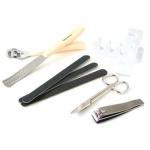
Nail files are available in metal, glass or cardboard. A cardboard nail file is also known as an emery board. It is more gentle than metal or glass and is disposable.
A metal nail file’s abrasive surface is usually made of mineral corundum. It is the most abrasive file and is best for thicker nails.
Glass nail files are more expensive than metal or emery files. Their abrasive surface is finer and smoother, therefore not suitable for tough jobs.
For personal nail scissors/clippers and nail files, it is advisable not to share with other people. While it isn’t necessary to sterilize your personal nail tools, they should be regularly disinfected. A disinfectant wipe will be suitable.
Corn and Callus Products
Many preparations and pads are available for corn and callus home treatment:
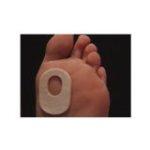
Medicated pads and drops can be harmful since the acid in the preparation can burn the skin around the corn or callus. At a recent foot clinic, a client showed me a large, irritated area on the bottom of her foot. She had been using an over-the-counter medicated pad for a few weeks and now the area around the callus was showing large areas of peeling and redness caused by the medication in the pad.
Non-medicated pads and moleskin are useful. To avoid undue pressure (and pain) over the corn or callus, use pads with the hole in the middle or cut a hole yourself. This way, the pad protects the corn or callus without discomfort.
I do not recommend corn and callus scrapers/shavers for in-home use. These items

Because of an increased risk of infection in diabetic feet, it is never recommended that diabetics use medicated pads or corn and callus scrapers/shavers. Even a slight irritation or scratch can develop into a complicated infection.
Warts and Plantar Warts Medication
Like medicated corn and callus pads, wart preparations can also damage the skin around the wart. It may take weeks to eradicate warts, especially plantar warts, despite claims on the packaging. Before purchasing wart medications, try home remedies first. Often, they are just as good as over-the-counter preparations (read here).
Again, diabetics should stay away from over-the-counter wart preparations. There is a possibility of damage to surrounding skin which can cause infection.
Toe Spacers, Padding, Toe Props
These are great deals in the foot care aisle. The purpose of these devices is to realign toes which are crowded together, clawing downwards or in need of some padding for increased comfort inside shoes.
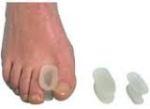
Toe spacers are placed between toes that are crammed together. They are generally comfortable if the right size is used. Trial and error may be needed to find a toe spacer which fits and is comfortable.
Padding usually comes as foam tubes or adhesive moleskin. They may be cut to size.
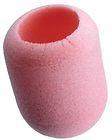
Foam tubes usually come in 3 different sizes and the one to use depends on the size of the toe. The tube foam slips on over the entire toe, acting as a cushion and/or toe spacer.
Moleskin pads are adhesive and may be cut to fit the affected area. There are different thicknesses of moleskin available. Again trial and error is needed to find the right thickness.
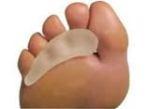
Toe props are placed under the toes, to straighten and realign claw toes.
Insoles
The variety of insoles can be staggering at a well-stocked foot care aisle. There are insoles for everything from plantar fasciaitis, diabetics, sweaty feet, runners, walkers, high heels, the list goes on. In general, these are very good buys.
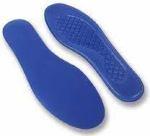
Heel Creams and Foot Soaks
Many of these preparations contain fragrance which is drying to the skin. Instead of highly fragranced items, there are other choices that will not promote dryness.
Find a moisturizing body lotion or cream that contains urea. Urea is a natural substance produced in the body and it serves to retain moisture. Urea added to moisturizers does the same thing. Choose a non-fragranced product.
Fragranced foot soaks contain epsom salts as the main ingredient. For a cost-effective, less drying alternative to fancier products, combine regular, fragrance-free epsom salts with a shallow basin of warm water.
White vinegar is very good for the feet. Make a solution of 1/4 cup white vinegar and a shallow basin of warm water for a skin-smoothing, fungus-inhibiting, inexpensive foot soak.
Other Items
Pumice stones are handy and effective for gently scrubbing away dry skin on heels. They are also good for sloughing calluses and corns.
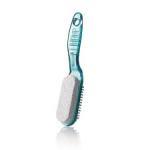
Athlete’s foot medications come in creams, powders and sprays. With consistent use and other measures, they can be effective for mild athlete’s foot. Complicated athlete’s foot should be treated by your doctor. Diabetics with athlete’s foot should always consult their doctor.
